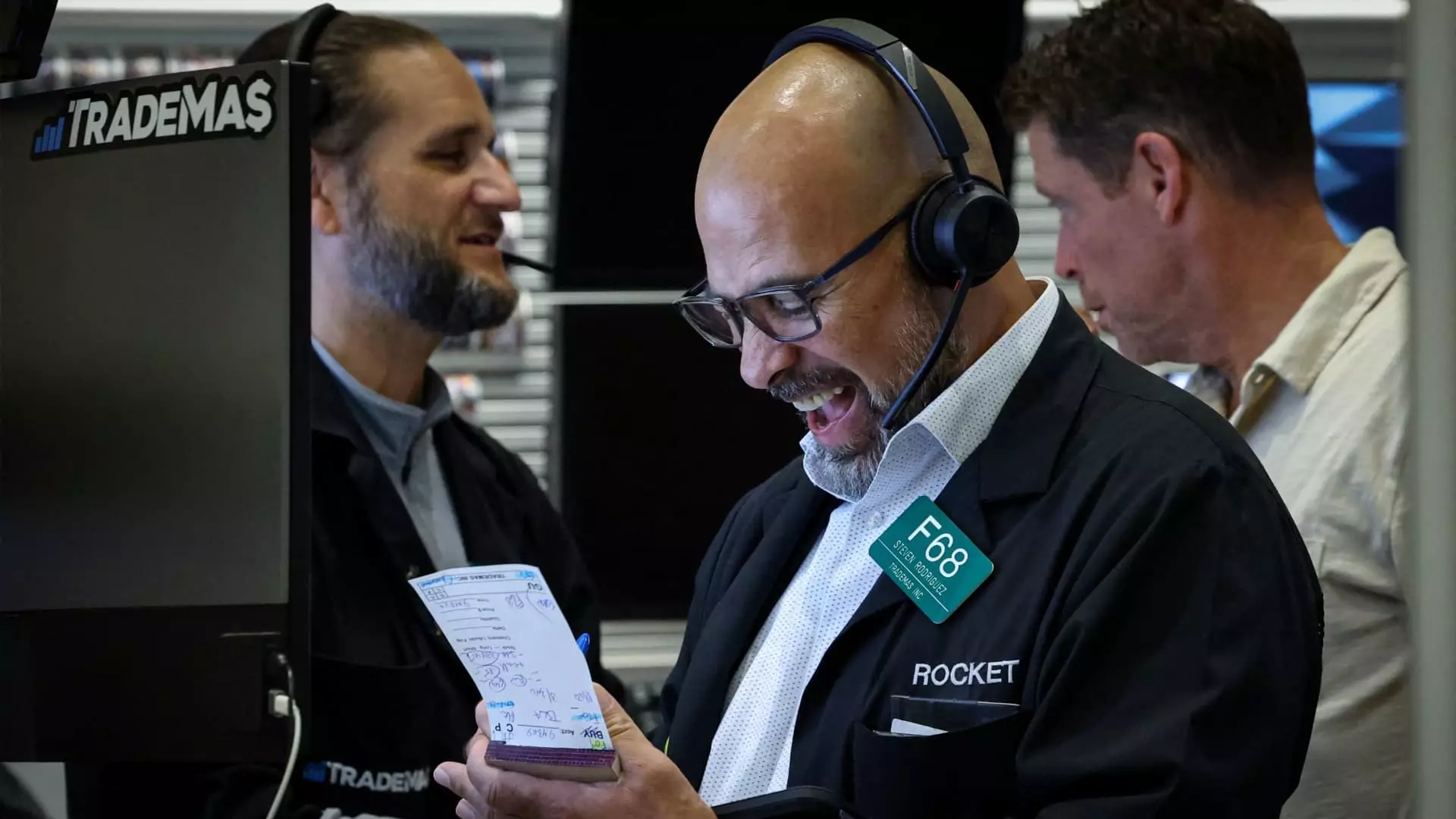In recent weeks, the financial markets have shown an extraordinary display of resilience, seemingly shrugging off mounting economic concerns. The surge in U.S. equity markets, driven by speculative optimism about imminent Federal Reserve rate cuts, presents a paradox. While policymakers signal potential easing, underlying economic fundamentals reveal fragility, and the political environment remains undeniably volatile. This divergence raises a critical question: Are investors blinded by short-term gains, ignoring the structural vulnerabilities that threaten to unravel this recent rally?
The current market optimism hinges heavily on the anticipation of a September interest rate reduction, potentially by as much as 50 basis points. Fed Chairman Jerome Powell’s statements are often scrutinized for clues, and recent signals suggest a dovish tilt aimed at supporting the economy without fully abandoning inflation-fighting credibility. Yet, this maneuvering is more symbolic than substantive, a tactical gamble designed to assuage market fears while maintaining the Fed’s independence. Investors and analysts alike are clinging to these hints of easing, even as global economic data paint a more nuanced picture—one of slowing growth, persistent inflationary pressures, and geopolitical uncertainties.
Despite the rally, recent trading history paints a cautionary tale. The last five days saw small, yet persistent declines, and this pattern of volatility exemplifies the fragile nature of current optimism. Markets have historically reacted sharply to Jackson Hole speeches, with past Federal Reserve chair remarks triggering sizeable swings—both upward and downward. Such volatility should serve as a reminder: market sentiment remains precariously balanced on the thin edge of monetary policy signals and macroeconomic realities.
The Political Shuffle and the Myth of Central Bank Independence
One cannot ignore the influence of politics in this delicate equation. The Trump administration’s public pressures on the Fed to cut rates have been relentless, framing the central bank’s decisions within a political contest rather than purely economic metrics. Jerome Powell’s careful language, emphasizing data dependency and independence, appears to be a strategic refusal to succumb to political influence. Nonetheless, the perception of political pressure lingers, undermining the credibility of the Fed’s autonomy and complicating their decision-making process.
In such a scenario, the idea that monetary policy can be free from political maneuvering is increasingly suspect. Instead, markets seem to interpret the Fed’s words through a political lens, reacting violently to perceived signals, whether dovish or hawkish. This environment fosters a form of market volatility that is less about fundamentals and more about political theatrics, making genuine valuation and risk assessment more complex and uncertain.
The overarching concern remains: the U.S. job market. Policymakers are intensely vigilant about employment figures, which they view as crucial for maintaining economic stability. Yet, in their pursuit of softening inflation, there’s a risk of overcorrecting—potentially stifling growth and inducing a slowdown that could damage the very job markets they aim to protect.
The Risks of a False Dawn and a Detached Market Narrative
Amid this backdrop, investors are employing sophisticated strategies, like risk reversals, to navigate the unpredictable waters. These positions reflect a belief that markets could reach new highs, but only if certain thresholds—like the benchmark S&P 500 hitting new all-time peaks—are maintained. The trade involving SPY options illustrates a calculated gamble: betting on continued upside while hedging against potential downside.
But beneath these tactical maneuvers lies a stark reality—markets are increasingly detached from the economic fundamentals. The current rally, while enticing, may be largely driven by sentiment and central bank policy signals rather than sustainable growth. If economic conditions deteriorate or geopolitical tensions escalate, the market’s resilience could quickly give way to sharp corrections.
The question of whether the Federal Reserve’s tentative easing will truly bolster the economy or merely inflate a bubble remains unanswered. True economic health would require tangible signs of consumer strength, corporate investment, and geopolitical stability—none of which are assured in the near term. Market participants, caught in this illusion of perpetual optimism, must recognize that the foundation beneath this speculative rise remains shaky at best.
In the end, the market’s current exuberance might be more about temporary sentiment than a true reflection of economic resilience. Investors should approach these gains with skepticism, understanding that the path of least resistance today may become the trap of tomorrow. It’s a risky game—one that demands not only strategic acumen but a healthy dose of skepticism regarding the true state of the economy.

